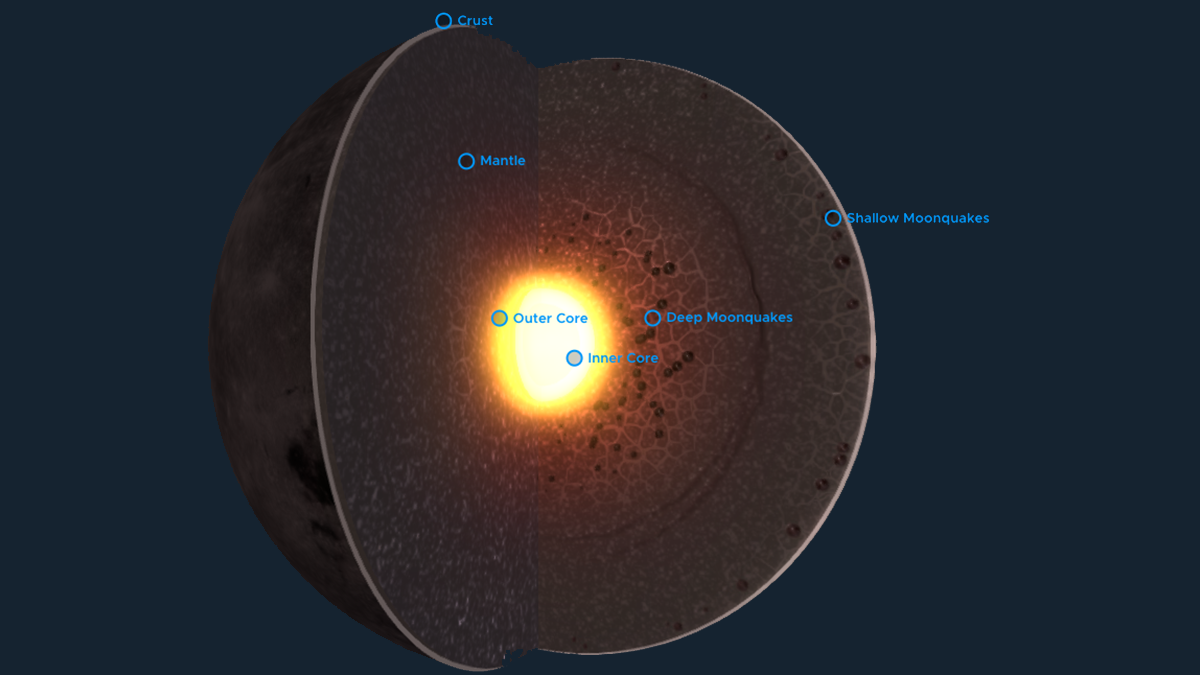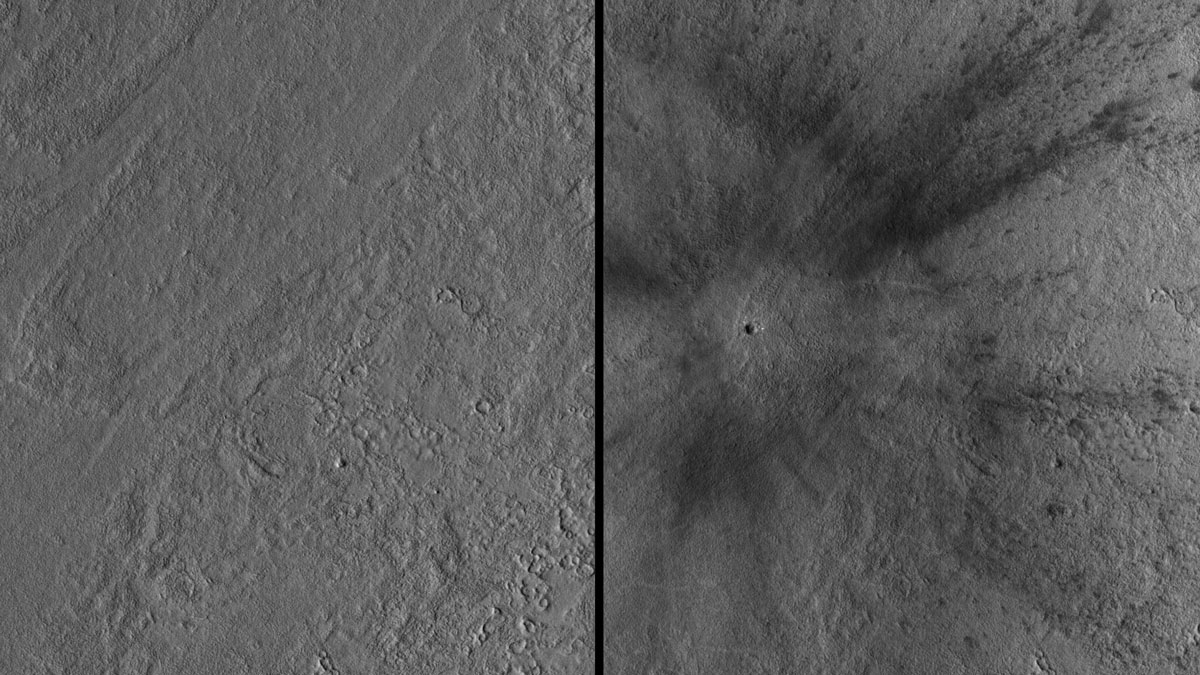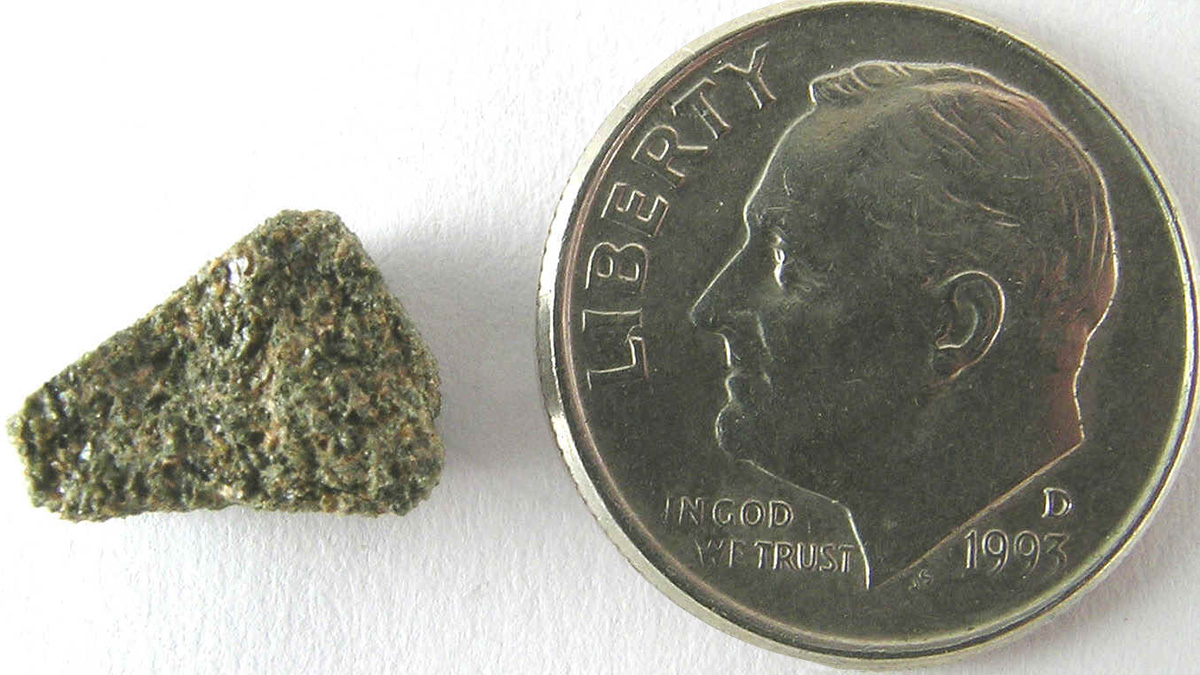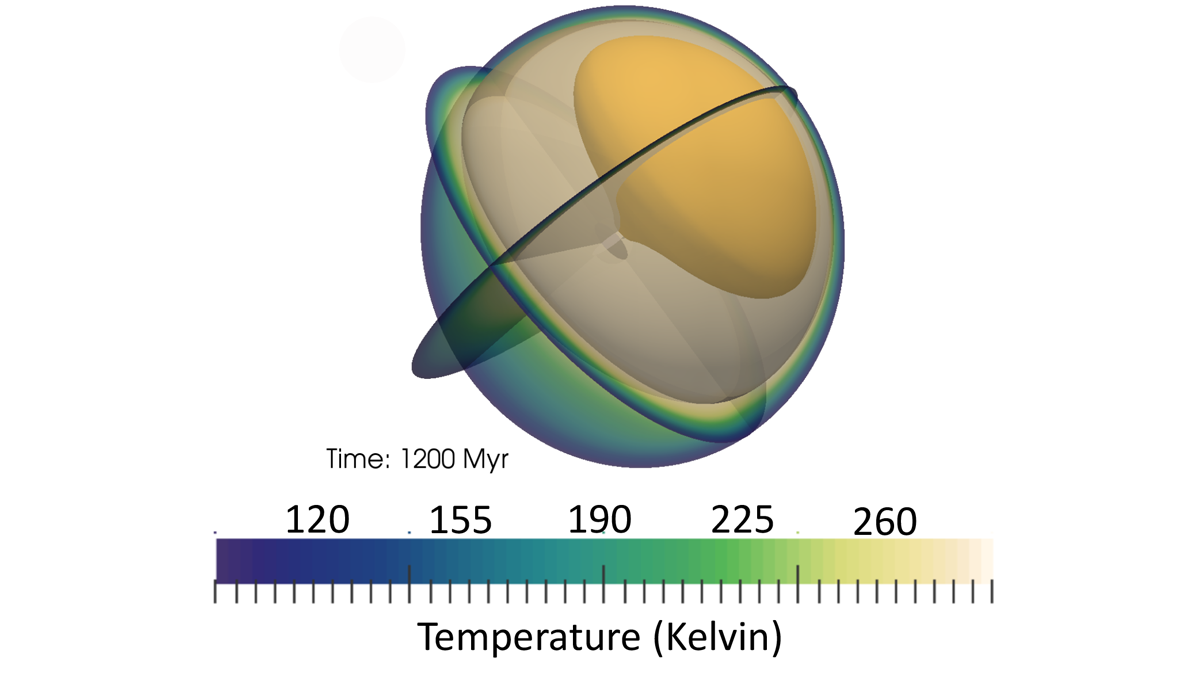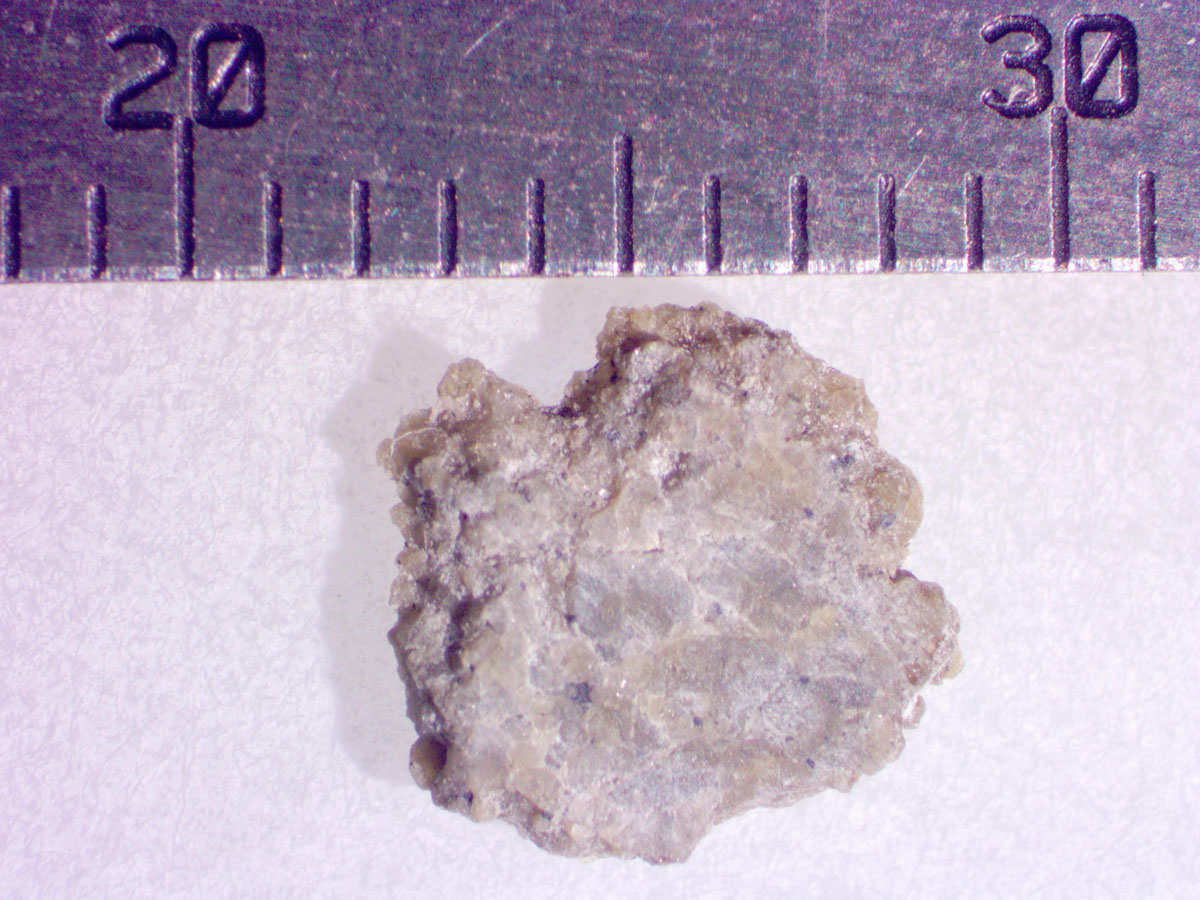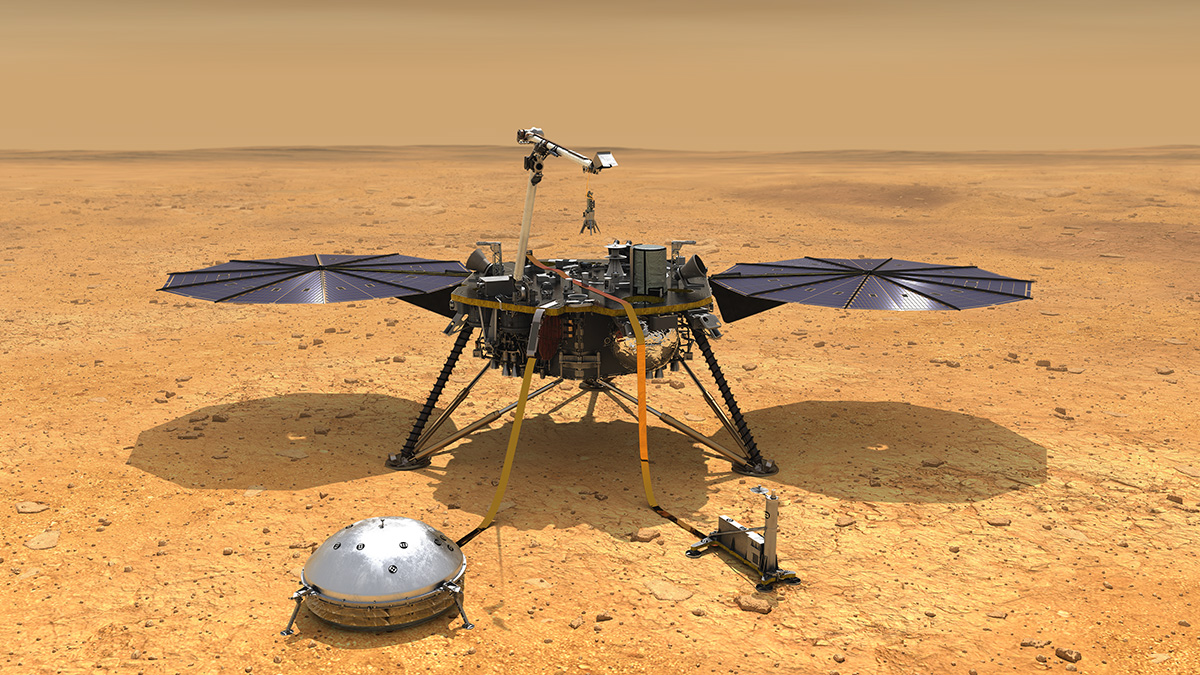Geophysical data has suggested that the base of the Moon’s mantle is partially molten or contains ilmenite, but an improved rheology model puts the existence of this layer in doubt.
planetary interiors
Nearby Volcano Planet Likely Fueled by Tidal Heating
A gravitational dance between a newly discovered exoplanet and its host star may be driving extreme volcanism on its surface.
Meteor Impact Could Inform Martian Mysteries
The impact sent surface waves rippling over the Martian surface all the way to NASA’s InSight lander, giving scientists a rare view of the planet’s outer layer.
Martian Meteorites Offer a Tantalizing Glimpse of the Red Planet
By studying these literal chunks of Mars, scientists are learning more about the Red Planet’s deep interior and impact history.
Powerful Impact Provides Insight into Deep Structure of Mars
Seismic signals detected by the InSight lander show that the planet’s lower mantle may be less homogenous than previous models have suggested.
Abiotic Life and Energy on Water-Rich Rocky Celestial Bodies
The discovery of tiny crystals of the iron-rich hydroxychloride kuliginite in New Caledonia provides new insights into the hydrogen production from mantle rocks and saline water.
Ceres: Missing Craters, Crust Thickness Variation by Interior Convection
Models show that several puzzling features about Ceres’ topography, gravity anomalies, and crater size distribution may be explained by asymmetric hemispherical convection due to radiogenic heating.
Flipping the Sequence of Martian Formation
Analysis of the Chassigny meteorite suggests the planet acquired most of its interior volatiles from meteorites, not from the solar nebula.
Constraining Martian Crustal Thickness with InSight Seismology
The first seismic observations from Mars significantly reduce uncertainty in estimates of the Red Planet’s crustal structure.
Can Uranus’s Rings Reveal the Planet’s Deepest Secrets?
Planetary rings can act as seismometers that respond to changes deep within a planet.

